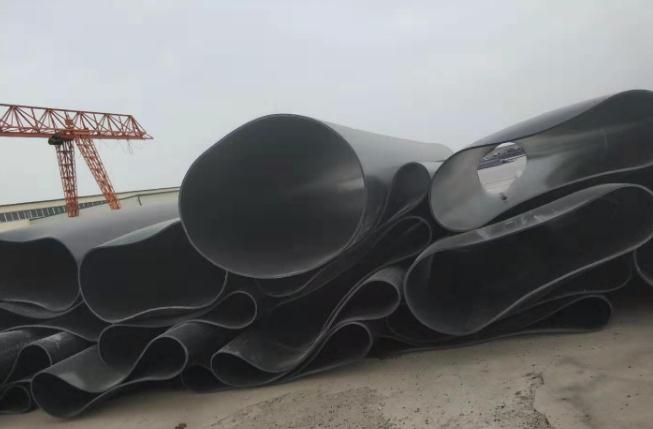HDPE double-wall corrugated pipe, HDPE drain pipe, HDPE feed pipe and additional high density polyethylene (HDPE) for white powder or granular products. Non-toxic, tasteless, crystallinity is 80% ~ 90%, softening point is ~ ℃, the use of temperature can reach ℃; the hardness, tensile strength and creep properties of low density polyethylene are better than those of low density polyethylene. Excellent wear resistance, electrical insulation, toughness and cold resistance.
HDPE pipe manufacturers say they have excellent chemical stability, at room temperature, insoluble in any organic solvents, acid, alkali and all kinds of salt corrosion resistance; thin film to water vapor and air permeability is tiny, low water absorption; the aging resistance is poor, the environmental stress cracking resistance is not as excellent as low density polyethylene, especially the thermal oxidation will reduce its performance, therefore the resin must be added to the antioxidant and ultraviolet absorbent to improve this deficiency.

High density polyethylene (HDPE) is commonly manufactured by Ziegler-Natta polymerization. It is characterized by the absence of branched chains in the molecular chain, so the molecular chain arrangement is regular and has a high density. In this process, ethylene is used as raw material and oxygen or organic peroxide is used as initiator to initiate polymerization in a tube or kettle type low pressure reactor.
High density ethylene is an environmentally friendly material, heated to the melting point, can be recycled. Notice that plastic materials can be divided into two main categories: "Thermoplastic" and "thermosetting plastics", "thermosetting plastics" is heated to a certain temperature and becomes solidified, even if continued heating can not alter its state, therefore, the products with environmental problems are "thermosetting plastics" products (such as tires), not "thermoplastic" products, thus not all "plastics" are not environmentally friendly.
Also innovative are high-density polyethylene (HDPE) pipes, which have a single spiral blade of some strength on the inner wall of the drainpipe, causing the water flow in the riser to quickly form a wall swirl, although slowing the flow down.
Therefore, the water flow can maintain the uniform spiral flow as much as possible, reduce the beating and impact of the water flow on the pipe wall, reduce the collision between the water flow and the air in the pipe, and thus considerably reduce the noise of the drainage riser.
The uniform spiral flow in the pipe avoids the collision of air and water in the pipe so as to better discharge from the snorkel, but increases the drainage capacity of the riser, and also provides a new idea for the calculation and design of the drainage capacity of the riser in the future.